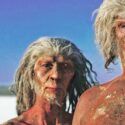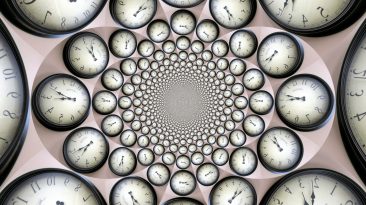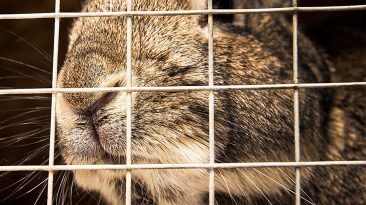About 50,000 years ago, we shared this planet with different hominids called the Neanderthals. Their species wasn’t human, but they weren’t far from it either.No longer walking among us, these early cousins of humans died out long ago. But not before they had a chance to, uh, get intimate with some of our ancestors.
But if you were to mate with a Neanderthal today, what would your children look like? Would your relationship stay monogamous? And how much money would you spend on a date?
With their protruding brows and large molars, a Neanderthal may not be the most attractive partner available. But considering that 20% of Neanderthal DNA is found in humans across the globe, they might have a little something going on. After all, our bodies are entirely compatible. And these primitive features might trigger something primal in you. And while you might have a wild night out, would you be able to speak the same language?
Let’s clear a few important things up. Humans did not evolve from the Neanderthals. Our species and theirs came from a common ancestor over half a million years ago. Then, like two branches on the same tree, we both went our separate ways. Neanderthals roamed Eurasia while humans were starting migrating out of Africa. But due to inbreeding and smaller population size, the Neanderthals slowly faded out of existence.
And if they were still around today, our gene pool might look wildly different. But before you start painting the nursery, let’s start talking about your matches. Again, you may not find Neanderthals, uh, conventionally attractive. But they weren’t the lumbering oafs from our imaginations. Our primitive cousins were adept at hunting and killed large animals at close range. They made tools and even created jewelry. These strong and fierce hominids would be able to protect you, bring home dinner and even make you an anniversary gift.
But you’d want to dine in more often, especially when you consider that Neanderthals would eat 700 calories more than humans per day. They might be primitive, but they wouldn’t be a cheap date. Also, considering that Neanderthals often ate the contents inside their prey’s stomach, their table manners may be a bit messy. But even then, there might be an attraction you couldn’t deny. So what would attract you to a Neanderthal?
Most of our human desires are ruled by the Specific Mate Recognition System. That means you’re attracted to individuals you feel comfortable with. So anyone who triggers the right anatomical, behavioral or chemical cues in you could cause an intense attraction. But, hey, you like whoever you like.
Unfortunately for you though, a relationship with a Neanderthal wouldn’t be exclusive. Neanderthals lived in small communities, and inbreeding was a common practice. So your potential in-laws would all be fierce competition for your partner’s affection.Our skin and hair still contain genes from Neanderthals’ surviving genomes.
While your children would have a full head of hair, they could suffer from blood clots and be more at risk for catching communicable diseases like COVID-19. And depending on your partner, your hybrid offspring might have trouble reproducing. Mating between human females and male Neanderthals would be less likely to have fertile children.
Neanderthals were known for their broad noses and protruding brows. Based on fossils found from these human-Neanderthal pairings, your kids might not inherit those features. But they could have massive molars, a large bone behind their ear or frontal face flattening. Flat Head Syndrome isn’t lethal for infants, but it can be costly to correct, involving physical therapy or expensive corrective helmets.
Humans mating with Neanderthals didn’t keep their species going, but their legacy lives on in our DNA. But maybe you want to keep some of your traits within your own family. So what would happen if everyone started inbreeding tomorrow?
Sources
- “100,000 Years Of Dramatic Population Changes“. 2021. Discover Magazine.
- “Here’s What We Know Sex With Neanderthals Was Like”. Gorvett, Zaria. 2021. Bbc.Com.
- “Humans And Neanderthals Had Sex. But Was It For Love?“. 2016. Vox.
- “Neanderthals Could Talk Like Humans, Study Suggests“.Rigby, Sara. 2021. BBC Science Focus Magazine.
- “Who Were The Neanderthals?“. 2021. Nhm.Ac.Uk.



























